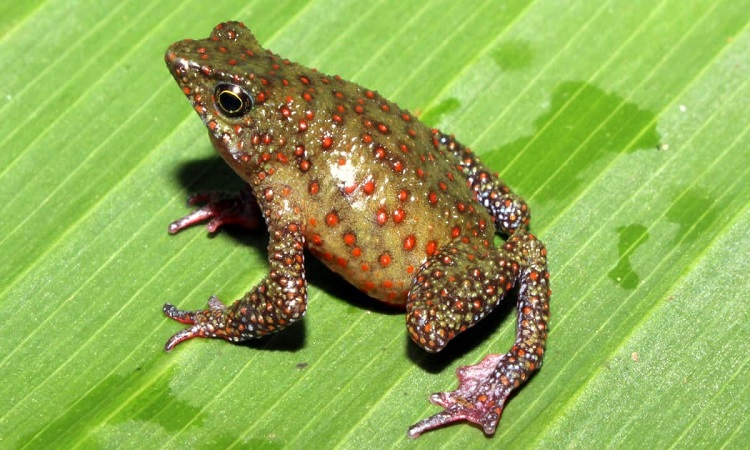Two new species of frogs have recently been discovered in nature reserves that protect the mountainous jungle ecosystems of the Peruvian Amazon, announced the National Service of Natural Protected Areas (Sernanp) of Peru.
The first is a marsupial frog of the genus Gastrotheca whose main characteristics are the green color of its back, the turquoise color of the irises of its eyes and a belly without spots, specks or points.
This new species of amphibian was found as part of a research study developed in the páramo and humid montane forest of the Cordillera de Colán National Sanctuary, at an altitude of 3,150 meters, belonging to the Amazon region, in northeastern Peru.
The second frog discovered is the Pristimantis sira, distinctive for lacking an eardrum and colored spots on the groin and for presenting a copper-yellow iris with a vertical black line and a black pupil surrounded by a copper-orange ring.
Likewise, its throat, chest and belly are brown or dark gray with scattered white spots, while its legs are dark brown.
This species was recorded in the leaves of shrubs and trees of the forests that are between 1,550 and 2,200 meters of altitude of the El Sira Communal Reserve, located on the eastern slope of the Andes, between the regions of Pasco, Huánuco and Ucayali. .
It was only observed at the beginning and end of the rainy season in two points of the El Sira Communal Reserve, so its discoverers have proposed considering it as a threatened and vulnerable species, with illegal alluvial mining as one of its main threats to this species.
Both discoveries were in charge of researchers from the Peruvian Institute of Herpetology, the Center for Ornithology and Biodiversity (Corbidi) and the Department of Biological Sciences of the International University of Florida (United States).
Scientists from the Pontifical Catholic University of Rio Grande do Sul (Brazil) and the Natural History Museum of the University of Florida (United States) also joined in the first case.




